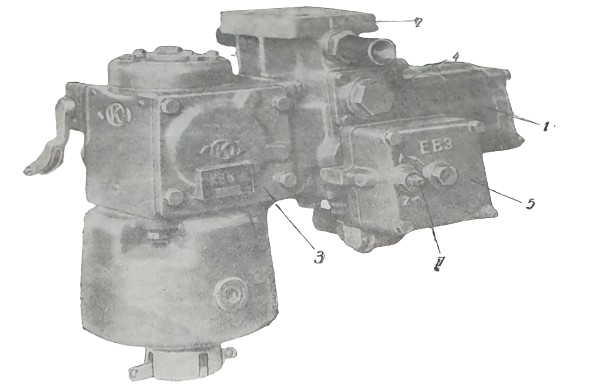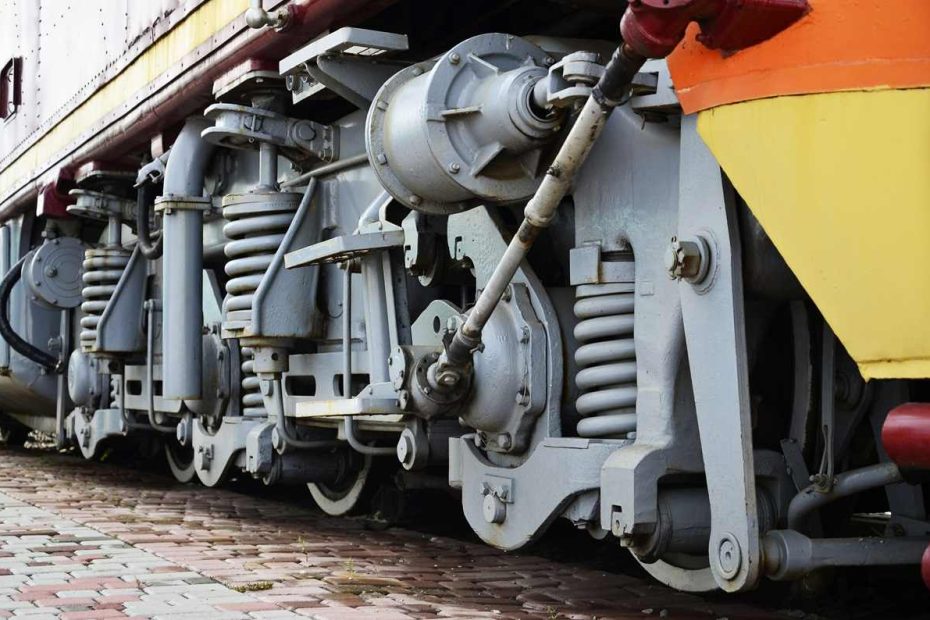The KEs function valve is a key element in the braking system of trains designed for high speeds. It provides smooth and controlled braking, as well as a two-stage pneumatic hold depending on the speed of travel.
In this article, we will take a detailed look at the functions and working principles of the KEs function valve.
Degrees of pressure
The pressure levels are selected so that at high speeds the maximum braking force amounts to 160% of the vehicle’s weight, and at lower speeds – approximately below 50 km/h, to 70% of its weight. In the position marked “R” – fast train, which is also indicated by the letter “S”, the highest pressure in the brake cylinders is:
a) at low speed 1.65 to 1.8 kg/cm2;
b) at high speed 3.7 to 3.9 kg/cm2.
Principle of operation of the functional apparatus KEs
The KEs function valve consists of several key elements that interact to provide braking action. These items include a pressure transducer, valve carriers, pilot valves, R-fill valves, and quick-acting accelerators. Their coordinated workflow allows automatic switching between different levels of braking force depending on speed and road conditions.

1 – pressure translator; 2 – valve carrier; 3 – pre-command valve; 4 -R- filling valve; 5 – fast-acting accelerator; 7 – switching on and off the fast-acting accelerator; A – open; Z – closed
Detention system
The main purpose of the KEs functional apparatus is to ensure a strong and stable hold of the train, especially at high speeds. Braking force is automatically adjusted by engaging the strong hold at higher speeds and the weak hold activated at lower speeds. This ensures optimal braking action, avoiding wheel lock.
Strong hold occurs at about 70 km/h when speed is increasing, and at about 50 km/h when speed is decreasing, weak hold is engaged. In this case, in the brake cylinders, the higher pressures at high speed and the lower pressures at low speed are obtained with an equal discharge of air from the main air line.
At high speeds, braking forces are high to achieve good holding action despite low friction coefficients. When the speed decreases, the braking force also decreases, because simultaneously with the increase in the magnitude of the friction, the danger of locking the wheels increases.
Switching from strong to weak braking force is automatic by means of a centrifugal regulator that acts depending on the speed.
The KEs functional apparatus also has the necessary connections for a magnetic rail brake control device and allows connection to an anti-wheel drag device.
Connection principle
The KEs functional apparatus is constructed on the principle of combining different nodes in one common valve carrier. This allows easy connection and control of all aspects of the braking system from one central point. Such an architecture facilitates system maintenance and revisions.
All the pipes are led to this support, on which are cast letters which mean the following:
L – main air duct;
R1 – auxiliary air tank
R2 – auxiliary air tank
C – brake cylinder;
F – centrifugal regulator;
ÜB – tank (portable chamber) with a capacity of 9 l.
Through their connected arrangement in the KEs functional apparatus, it is possible to actuate all turning devices from one common axis. The valve carrier only has pipe connections and can remain on the wagon for major overhauls. In this way, all verifiable nodes can be covered.
The KEs function valve is an integral part of train braking systems, ensuring efficient braking and railway safety. With its help, trains can be operated more efficiently and safely both during acceleration and braking, ensuring a smooth and comfortable journey for passengers.
